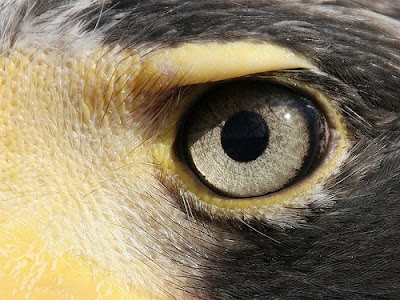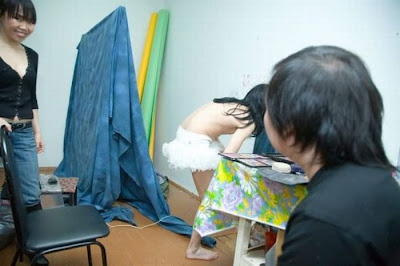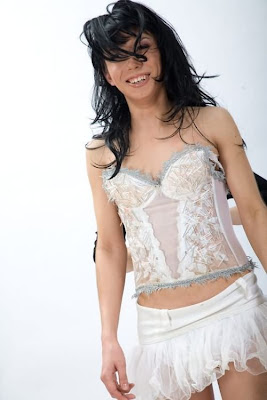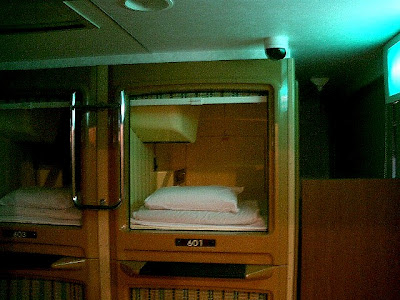The
family with 18 children that prays together... gets bigger and bigger: Meet devoutly Christian Mr and Mrs Bates and their EIGHTEEN children
Super-parents Gil and Kelly Bates love babies so much, they can't stop having them.
The couple, from Tennessee, U.S., celebrated the birth of their 18th child a month ago and are already praying for more.
The Bates look set to become the
big family in the world one day, and are one baby behind the Duggars of Arkansas, who have 19.
'We will have many more children if God allows it,' said proud dad Gil, 45, a tree surgeon.

Truly blessed: The Bates family (from left to right) Ellie, Addallee, Isaiah, Warden, Jackson, Katie, Josie, Carlin, Trace, Tori, Alyssa, Nathan, Lawson, Erin, Michaella, Kelly holding Judson Wyatt and Gil holding Callie-Anna
'Children are a blessing and God has blessed us many, many times.'
Devoted mum Kelly, 43, said: 'We just love children and every baby brings extra joy to our family. The most exciting time is when a new baby comes.
'We all wonder are the boys going to be ahead, or are the girls going to be ahead?'
The couple married 23 years ago, and Kelly has been pregnant for almost every year.
Their massive brood range includes Zach, 21, Michaela, 20, Erin, 18, Lawson, 17, Nathan, 16, Alyssa, 15, Tori, 14, Trace, 13, Carlin, 12, Josie, 11, Katie, 10, Jackson, 8, Warden, 7, Isaiah, 5, Addallee, 4, Ellie, 3, Callie-Anna, 1, and Judson Wyatt, one month.

Feeding the five thousand: The family fill up half a restaurant when they go out on in Lake city, Tennessee - and their own dining table is so large Dad Gil says he can't hear what's going on at the far end
Dad Gil is busy extending their home which already has five bedrooms, eight bathrooms, two kitchens, a huge dining room with a 14ft table and its own nursery and a schoolroom.
The Bateses make many of their own clothes and refuse to have a TV in the house, spending their spare time playing games, singing and playing instruments.
At weekends they go out singing together at old people's homes to spread goodwill.

Expanding home: Gil, a tree surgeon, is currently extending their five-bedroom, eight-bathroom property in Lake City to make more space
Gil runs a tree surgery business with some of his older sons while Kelly, a housewife, teaches all the younger children at home.
The family gets through a massive amount of food each week - polishing off 48 eggs, four packs of bacon, 40 scones and two large loaves of bread each breakfast time.

Most recent additions: Gil and Kelly met at college in 1986, married in 1987 and she fell pregnant soon after. Here they are holding Callie-Anna, one, and month-old Judson Wyatt
'The dining table is so big I can't really hear the people at the far end,' said Gil.
The house has four huge washing machines and two industrial dryers to cope with the seven loads of washing that needs to be done every day.
'The kids are very responsible and caring of each other,' said Kelly.
'I hardly even cook these days.'
Gil and Kelly met at college in South Carolina in 1986.
They married in 1987 and Kelly fell pregnant soon after.
'I didn't want any children at all when I was younger,' said Kelly. 'I wanted to be a career woman. I didn't enjoy babysitting. But over time God changed my heart.'
After Gil finished college, the babies came thick and fast. For the first 15 years Kelly was pregnant every single year.
'I was pregnant more than I wasn't pregnant,' said Kelly.
'I always loved having lots of brothers and sisters,' said Zach, the eldest, 21, who is a volunteer fire fighter, as well as working for his dad.
'There's always someone to play with. There's always a friend. I don't know what being lonely feels like.'
After the couple's 16th child, Ellie, now three, Kelly suffered two miscarriages.
'That was one of the hardest times in our lives,' said Gil, who has delivered 11 of his children.
Doctors told Kelly that the miscarriages were caused by low progesterone levels so, after some hormone replacement, she fell pregnant yet again.

Spreading goodwill: At weekends, the family go out singing at old people's homes. 'We wouldn't change our family for the world,' says Nathan, 17
Baby number 17, Callie-Anna Bates, was born on August 2, 2009.
On September 15, 2010 Judson Wyatt, the family's eighth boy and 18th child was born.
The brothers and sisters sometimes argue but the Bates' say they are usually one big
happy family.
Nathan, 17, said: 'None of us would change our family for the world.
'It's currently eight boys and ten girls.
'We've got a bit of a race going and Mom needs to have two more boys to settle it.'

 Julia was born in Bremen, Germany to a German mother and an English father. The family then moved to the United States, and back to Germany, before moving to England in 1986. Julia now lives in London.
Julia was born in Bremen, Germany to a German mother and an English father. The family then moved to the United States, and back to Germany, before moving to England in 1986. Julia now lives in London.
 After graduating with a Diploma in photography from Berkshire College of Art and Design, Julia spent five years as a freelance assistant. During this time, the shoots covered a wide variety of different fields - car advertisement, still-life, fashion, food, location shots, etc. She was able to hone her knowledge and skills, and at the same time begin to develop her own unique style.
After graduating with a Diploma in photography from Berkshire College of Art and Design, Julia spent five years as a freelance assistant. During this time, the shoots covered a wide variety of different fields - car advertisement, still-life, fashion, food, location shots, etc. She was able to hone her knowledge and skills, and at the same time begin to develop her own unique style.
 Uniquely, for these shoots, Julia deliberately select girls who are not proffesional models. Once she has the idea for the shoot, she street casts the models. This produces a slight awkwardness in the posture of the models that enhances the unusual surroundings. Another difference is Julia's use of studio lighting to supplement daylight/ She may use as many as seven or eight lash heads to achieve the impression that she wants. This combination of eye for the content of an image, the naturalness of the models, the unusual surroundings, the effect of the lighting all combine to yield a style that identifies her pictures.
Uniquely, for these shoots, Julia deliberately select girls who are not proffesional models. Once she has the idea for the shoot, she street casts the models. This produces a slight awkwardness in the posture of the models that enhances the unusual surroundings. Another difference is Julia's use of studio lighting to supplement daylight/ She may use as many as seven or eight lash heads to achieve the impression that she wants. This combination of eye for the content of an image, the naturalness of the models, the unusual surroundings, the effect of the lighting all combine to yield a style that identifies her pictures.
 This is assuming that you already have perfect distance vision. If you are currently reading this article and are under 40 years of age with perfect distance vision, I can say with absolute certainty that you will need reading glasses at some point in the future. For about 99% of the population the age that you will first start needing
This is assuming that you already have perfect distance vision. If you are currently reading this article and are under 40 years of age with perfect distance vision, I can say with absolute certainty that you will need reading glasses at some point in the future. For about 99% of the population the age that you will first start needing  Just behind the pupil sits the eyes natural lens, whose function is to focus on the object you are looking at. Just take a minute to glance around the room and think about how many different distances you are focusing at. Every time you do this, the lens in your eye is instantly changing focus without you even being aware of it! Compare that with a
Just behind the pupil sits the eyes natural lens, whose function is to focus on the object you are looking at. Just take a minute to glance around the room and think about how many different distances you are focusing at. Every time you do this, the lens in your eye is instantly changing focus without you even being aware of it! Compare that with a  By the age of 7 years old our eyes are fully developed and are physiologically the same as
By the age of 7 years old our eyes are fully developed and are physiologically the same as 
 People don’t realize that
People don’t realize that  People who suffer from type 2
People who suffer from type 2  The function of your eyes is to collect all the required information about the object you are looking at. This information is then passed from your eye to
The function of your eyes is to collect all the required information about the object you are looking at. This information is then passed from your eye to 
 When people hear the phrase
When people hear the phrase  I know this might sound crazy but this is one of
I know this might sound crazy but this is one of 












 Stallions rear up on their hind legs as they fight for dominance in a herd of Koniks in The Netherlands
Stallions rear up on their hind legs as they fight for dominance in a herd of Koniks in The Netherlands

 The battle among the Koniks, or Polish primitive horses, took place at a nature reserve in Loevenstein, The Netherlands
The battle among the Koniks, or Polish primitive horses, took place at a nature reserve in Loevenstein, The Netherlands
 This style of hotel accommodation was developed in Japan and has not gained acceptance outside of the country. The Japanese capsule hotels vary widely in size, some having only fifty or so capsules and others over 700. They are often used primarily by men. There are also capsule hotels with separate male and female sleeping quarters.
This style of hotel accommodation was developed in Japan and has not gained acceptance outside of the country. The Japanese capsule hotels vary widely in size, some having only fifty or so capsules and others over 700. They are often used primarily by men. There are also capsule hotels with separate male and female sleeping quarters.


 Each capsule has a little control panel. There is an alarm clock, TV/Radio speaker, light and TV on/off switch, volume knob, and some panic button
Each capsule has a little control panel. There is an alarm clock, TV/Radio speaker, light and TV on/off switch, volume knob, and some panic button








 Truly blessed: The Bates family (from left to right) Ellie, Addallee, Isaiah, Warden, Jackson, Katie, Josie, Carlin, Trace, Tori, Alyssa, Nathan, Lawson, Erin, Michaella, Kelly holding Judson Wyatt and Gil holding Callie-Anna
Truly blessed: The Bates family (from left to right) Ellie, Addallee, Isaiah, Warden, Jackson, Katie, Josie, Carlin, Trace, Tori, Alyssa, Nathan, Lawson, Erin, Michaella, Kelly holding Judson Wyatt and Gil holding Callie-Anna Feeding the five thousand: The family fill up half a restaurant when they go out on in Lake city, Tennessee - and their own dining table is so large Dad Gil says he can't hear what's going on at the far end
Feeding the five thousand: The family fill up half a restaurant when they go out on in Lake city, Tennessee - and their own dining table is so large Dad Gil says he can't hear what's going on at the far end Expanding home: Gil, a tree surgeon, is currently extending their five-bedroom, eight-bathroom property in Lake City to make more space
Expanding home: Gil, a tree surgeon, is currently extending their five-bedroom, eight-bathroom property in Lake City to make more space Most recent additions: Gil and Kelly met at college in 1986, married in 1987 and she fell pregnant soon after. Here they are holding Callie-Anna, one, and month-old Judson Wyatt
Most recent additions: Gil and Kelly met at college in 1986, married in 1987 and she fell pregnant soon after. Here they are holding Callie-Anna, one, and month-old Judson Wyatt Spreading goodwill: At weekends, the family go out singing at old people's homes. 'We wouldn't change our family for the world,' says Nathan, 17
Spreading goodwill: At weekends, the family go out singing at old people's homes. 'We wouldn't change our family for the world,' says Nathan, 17